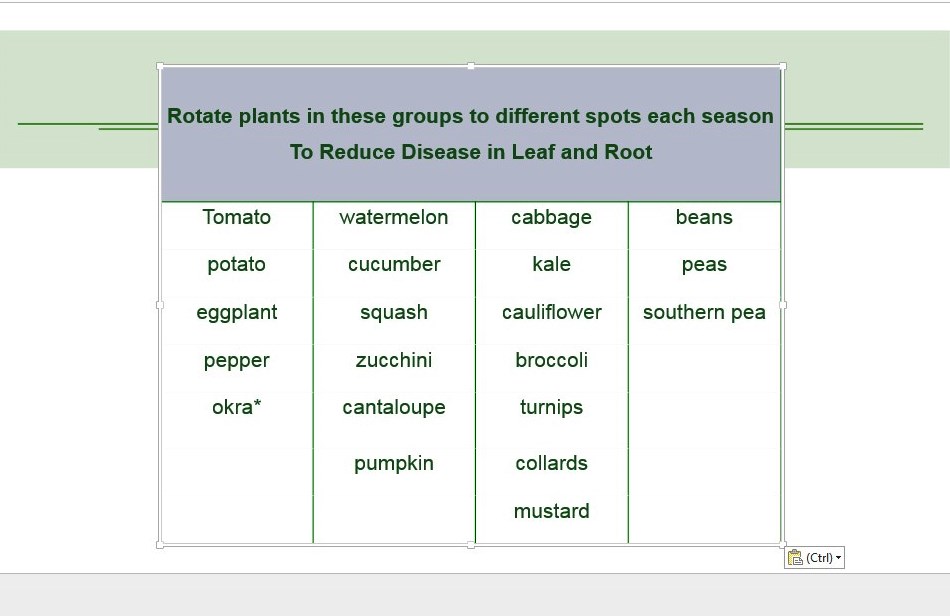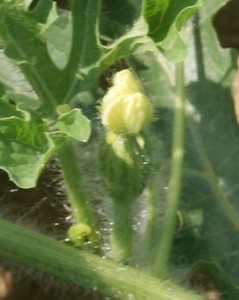With weather warming up and daylight savings time right around the corner, we are in the midst of prime time for planting spring vegetable gardens. Gardeners routinely growing vegetable gardens should note that it is best to rotate plant families when planning a vegetable garden. See the table below to determine which families should be rotated.

 Vegetable gardens should be located on sites receiving at least 6 hours of sun per day, consisting of well-drained soil rich in organic matter. Since most Florida soils are low in organic matter, composted organic matter should be added before or at planting time. Uncomposted organic matter should be mixed into soil one month before planting. Vegetable garden pH should be between 5.8 and 6.3 to maximize absorption of nutrients. If it is lower, addition of agricultural grade lime or dolomite will be necessary. Obtain a soil test from your local extension office to determine if liming is needed.
Vegetable gardens should be located on sites receiving at least 6 hours of sun per day, consisting of well-drained soil rich in organic matter. Since most Florida soils are low in organic matter, composted organic matter should be added before or at planting time. Uncomposted organic matter should be mixed into soil one month before planting. Vegetable garden pH should be between 5.8 and 6.3 to maximize absorption of nutrients. If it is lower, addition of agricultural grade lime or dolomite will be necessary. Obtain a soil test from your local extension office to determine if liming is needed.
Once soil test results are available, fertilizer amounts will be able to be determined. Many gardeners use commonly available fertilizers such as 10-10-10 or 8-8-8, with micro nutrients, following directions on the package to determine the amount to apply. The soil test will determine if phosphorous is needed, so follow those results when choosing a fertilizer. When fertilizing, broadcast the fertilizer over the garden area at pre-plant, then apply as needed throughout the season. This will likely consist of 2-3 light applications applied beyond the reach of the outer leaves.
Irrigation of vegetable gardens is best done with drip, so that fungal disease is not spread by getting leaves wet. An added benefit of drip irrigation is a reduction in the quantity of water needed. Gardens may also be top dressed by mulch or organic matter to aid in water conservation and soil temperature reduction.
In March, bush beans, pole beans, lima beans, cantaloupes, sweet corn, cucumbers, eggplant, okra, peppers southern peas, sweet potatoes, summer squash, and tomatoes may be planted. Some crops grow easier from transplants, while others grow better from direct seeding.
Tomatoes, peppers, eggplant and sweet potatoes are best established by transplanting. Cucumbers, cantaloupes, summer squash, beans, peas and okra are best established by direct seeding. Summer squash may be transplanted, but is more vigorous and productive when direct seeded.
Be sure to choose varieties adapted to North Florida by consulting the charts on pages 8, 9 and 10 of the Florida Vegetable Gardening Guide.
Happy Gardening!
 0
0
